A hardy and productive plant, broccoli is an excellent, nutritious vegetable to grow for gardeners of all levels across many growing zones. Knowing how to grow them will help ensure successful harvests and happy plants.
In this guide, we’ll cover all the details you’ll need to successfully grow broccoli. We’ll discuss its botanical classification, care requirements, growing from seed, and transplanting from young starts.
Alright, let’s dive in!
Broccoli: Botanical Classification and History
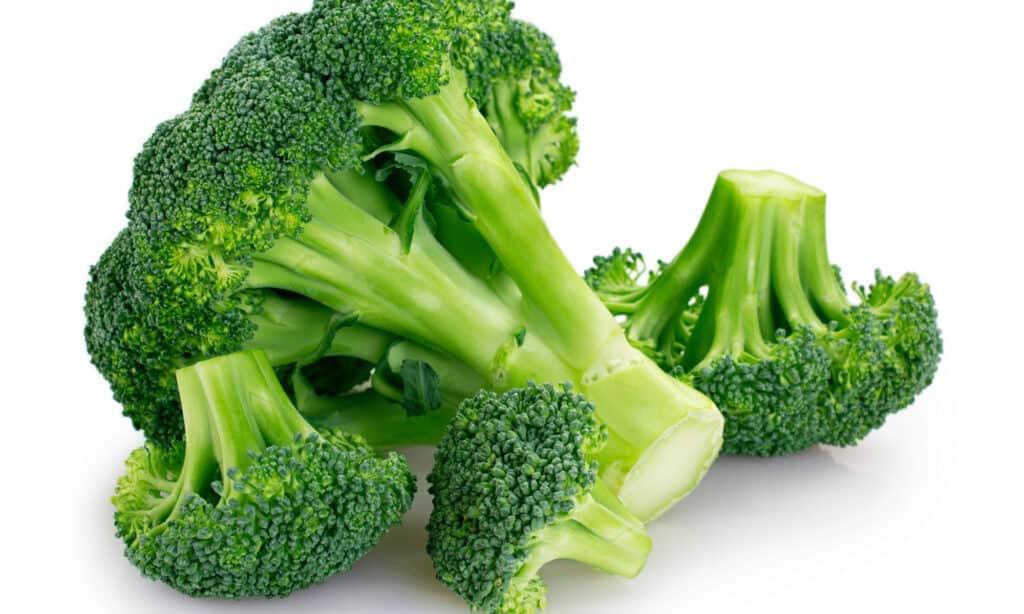
Broccoli emerged in the US in the 17th century with the arrival of European settlers.
©Valery121283/Shutterstock.com
A member of the Brassicaceae or brassica family, broccoli (Brassica oleracea var. italica) is actually a variety of wild cabbage (Brassica oleracea). Other commonly cultivated varieties of wild cabbage include kale, cabbage, cauliflower, brussels sprouts, and collard greens. This means that while all of these veggies may look quite distinct from each other, they’re actually the same species.
While the exact date of cultivation is unknown, broccoli was most likely created as a cultivated variety of wild cabbage in the Mediterranean region during the 6th century BC. This brassica stayed in cultivation mainly in Italy until the 16th century, when merchants and traders introduced broccoli to other areas of Europe. Broccoli emerged in the US in the 17th century with the arrival of European settlers. Although, farmers did not commercially grow this crop in the US until the 1920s.
How to Grow Broccoli
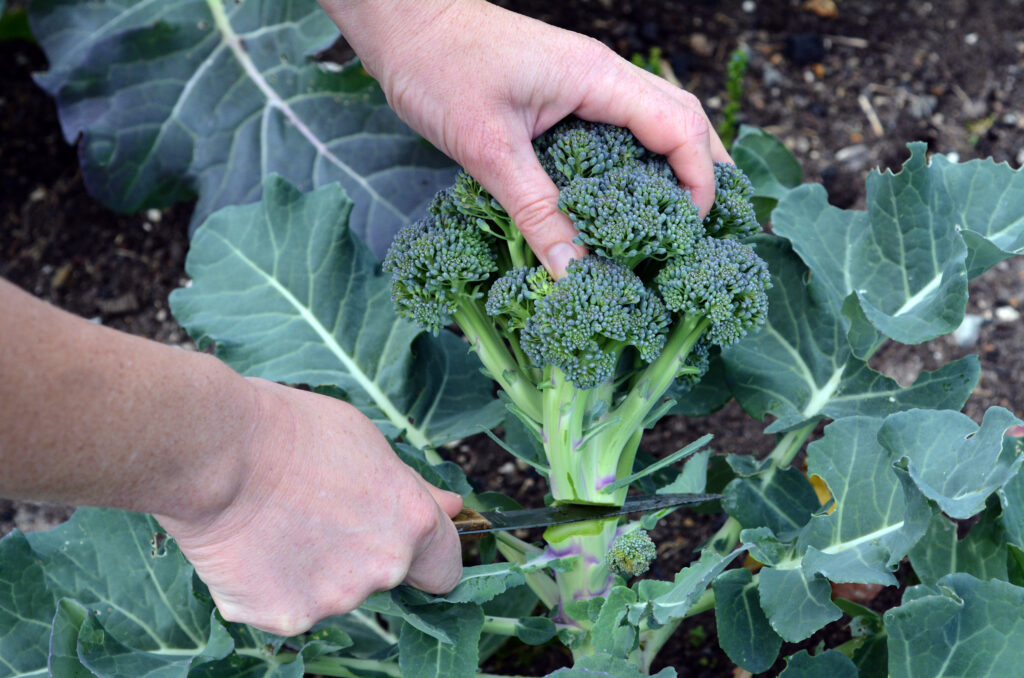
Most varieties of broccoli are annuals and produce a head that you can harvest typically two to three times over its growing season.
©ChameleonsEye/Shutterstock.com
To successfully grow broccoli, you’ll need to know in what growing zones it’s hardy, what soil it thrives in, and its watering, fertilizer, and sunlight requirements. If growing from seed, you’ll also need to know if it requires cold stratification for germination, when to sow seeds and correct row spacing. Finally, you’ll need to know how and when to transplant if you’re not growing directly from seed. With proper care, expect a harvest after 50-85 days, depending on whether you planted in the spring or fall. We’ll cover all of this crucial information below.
What Growing Zones are Suitable for Broccoli?
Broccoli is a rather hardy plant, as are most brassicas, so you can grow these tasty veggies in USDA hardiness zones 2-11. That range covers the entire continental US. This highly adaptable plant is known to survive moderate freezes down to 24 degrees Fahrenheit. Most varieties of broccoli are annuals and produce a head that you can harvest typically two to three times over its growing season, with the first head being the largest. There are some varieties, however, that produce small, tender shoots that you can grow as a perennial.
Ideal Soil Conditions
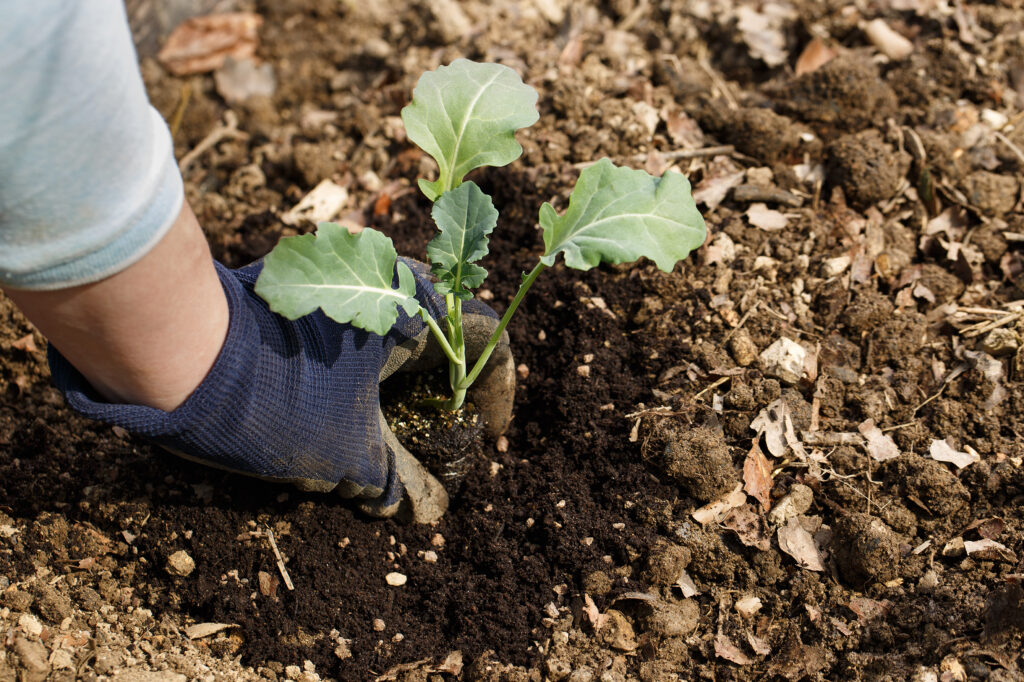
This brassica tends to do best in fertile, loamy soils that drain well but still retain adequate moisture.
©zlikovec/Shutterstock.com
Most brassica plants, including broccoli, like to grow in soil that is slightly acidic to neutral (6.0-7.0). This range helps the plant access the most nutrients available in the soil. Also, it helps to prevent the development of clubroot disease (Plasmodiophora brassicae), which can commonly afflict broccoli and other brassica crops. This brassica tends to do best in fertile, loamy soils that drain well but still retain adequate moisture.
You’ll likely need to amend clay soils with materials such as chopped bark, compost, composted leaves, and gypsum to help encourage drainage and reduce compaction issues. You can also grow in a raised bed with suitable soil if your ground isn’t particularly suitable for growing broccoli.
How to Grow Broccoli: Sunlight Requirements
Broccoli loves full sun, and it’s crucial to pick a growing location that provides at least 6 hours of full sun exposure daily. This plant tolerates partial shade but will take longer to mature, and the heads produced tend to be smaller and less dense. Planting in a south-facing direction will allow your broccoli to receive the most sun each day. This is especially important if you’re growing up in a northern climate.
Watering Requirements
If you’re transplanting your broccoli into the ground (more on this later), you’ll want to water every day for the first week to help the crop become established and to ease any symptoms of transplant stress. Once happily established, you’ll generally want to aim for watering your crop every four to five days. The amount of water required comes out to about 1.5-2 inches per week, which you can achieve through drip irrigation or hand watering.
How to Grow Broccoli: Fertilizer Requirements
Broccoli is quite a heavy feeder, so your plant will benefit from feedings every month with a low-nitrogen fertilizer. A typical fertilizer schedule for broccoli is to apply 2 pounds of a balanced or low nitrogen NPK (the ratio of Nitrogen-Phosphorus-Potassium) fertilizer per 100 square feet of crop bed every month during the growing season. You can also mix 1 inch of a well-developed compost into the soil per 100 square feet.
Some gardeners find success in using a low-nitrogen fertilizer until the plant is well established, as too much nitrogen can cause weak, hollow stems.
How to Direct Sow Broccoli Seeds
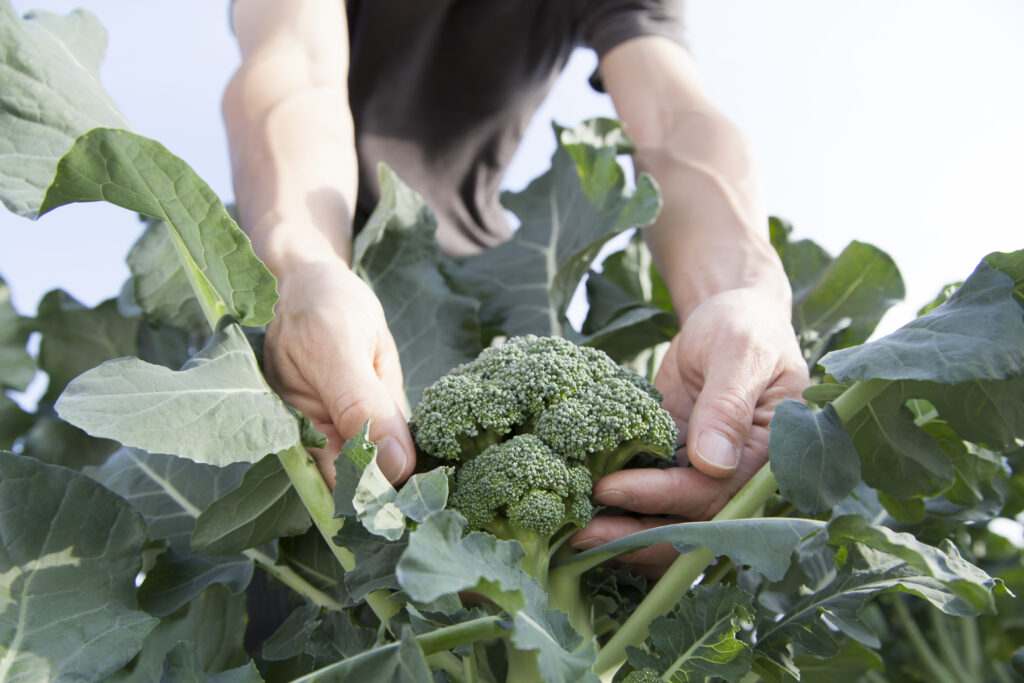
The germination temperature for broccoli seeds is quite wide, ranging from 40-85 degrees Fahrenheit.
©Alexander Knyazhinsky/Shutterstock.com
If you’re planning on sowing broccoli seeds directly into your garden, you’ll want to make sure you set your seeds up for success by knowing when and how to plant them. The germination temperature for broccoli seeds is quite wide, ranging from 40-85 degrees Fahrenheit. They don’t require cold stratification to germinate and tend to germinate faster when planted in warmer soil.
The best method for direct-sowing broccoli seeds is to plant them at 1/2-3/4in deep, spaced about 3 inches apart. Lightly and gently cover the seeds with soil after planting.
Once seedlings have reached a height of 2-3 inches tall, thin them by removing the least strong specimens so that your plants are 12 to 20 inches apart.
How to Transplant Young Broccoli Plants
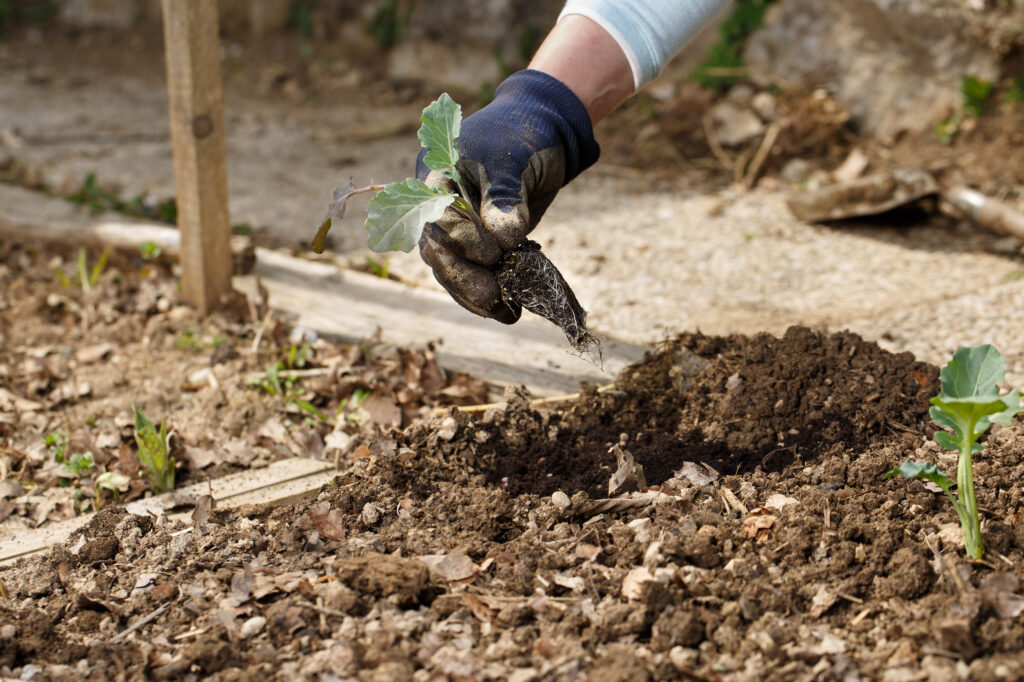
Transplanting on sunny, windy days increases the risk of your plant entering transplant shock.
©zlikovec/Shutterstock.com
The other method of planting broccoli is to transplant seedlings into the ground. You can either start seeds indoors or buy young broccoli plants from a nursery or garden center.
If you started seeds indoors, you’ll want to wait to transplant them until they’re about 4-6 weeks old. To help them acclimate to outdoor temperatures, it’s best to spend about one week prior to transplanting hardening the seedlings by gradually increasing their time outside. Follow the below steps to harden your broccoli seedlings successfully:
- Once plants are at least 4 weeks old, set your broccoli seedlings outside on a non-windy day once temperatures are over 45 degrees Fahrenheit. Start with just 2 hours of outside exposure in partial shade.
- Increase the amount of time the seedlings are outside by an hour each day, but keep the plants in a semi-shaded location for the first three days.
- On days four and five, increase sun exposure, keep the seedlings outside for 6 hours, and begin watering outside. Leave them outside overnight if temperatures don’t dip below 40 degrees Fahrenheit.
- On days six and seven, place your seedlings in full sun for at least 6 hours and leave them outside overnight.
- Your seedlings are now ready for transplanting.
Transplanting Weather Tips
Once you’re ready to transplant your seedlings, choose a cloudy, non-windy day to plant them into the ground. Transplanting on sunny, windy days increases the risk of your plant entering transplant shock. You can either water the soil before or after transplanting. Ensure the soil is well-draining, slightly acidic to neutral, fertile, and moist.
Plant your seedlings 18 to 24 inches apart. If you’re planting in more than one row, space rows apart by about 3 feet. The depth of the holes should be a little deeper than the depth of the seedling containers. Water thoroughly at the time of planting, and make sure to water daily for the first week. This will help ensure your plants become well-established and hardy. You can cut watering back to once every four to five days after the first week.
The photo featured at the top of this post is © Alexander Knyazhinsky/Shutterstock.com
Thank you for reading! Have some feedback for us? Contact the AZ Animals editorial team.







